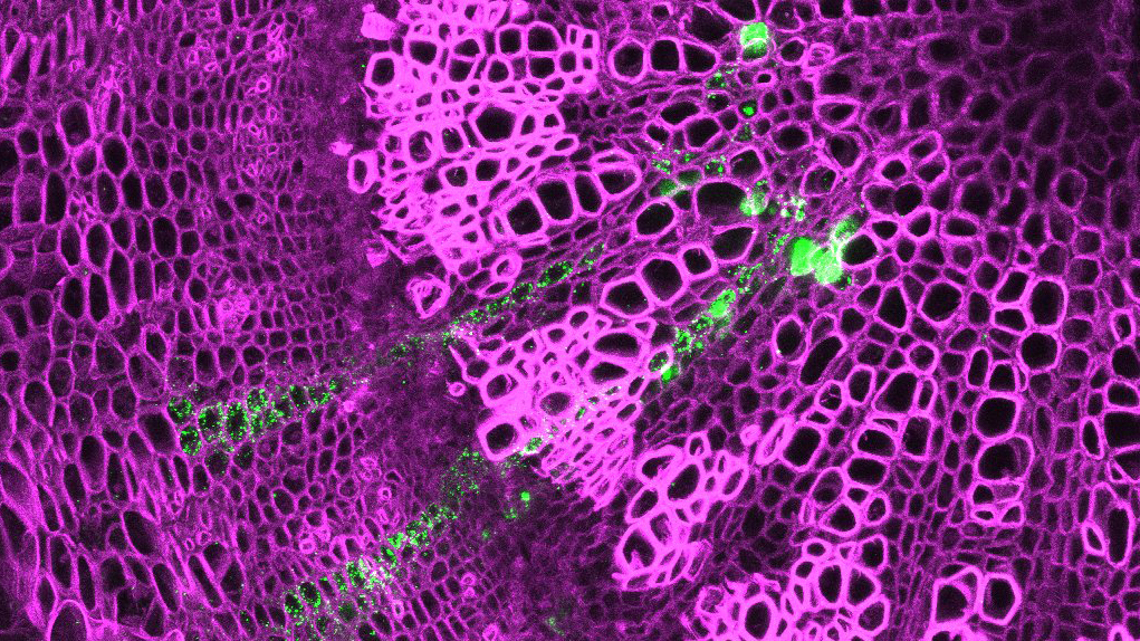Stem cells produce wood and bast
According to researchers from Heidelberg, so-called bifacial stem cells alternate between producing wood and bast cells.

Wood is one of the most important raw materials in our industry. It is used for energy production, as a sustainable building material, for the production of paper and even bioplastics. But how exactly does wood grow? This is what researchers from Heidelberg have been investigating. According to their report in the journal "Development", so-called bifacial stem cells are responsible for the formation of wood. Of note, these stem cells are not only the starting point for the production of wood, but also for the production of plant bast by alternately developing into either wood or bast cells.
The cambium is the growth layer of trees
Via photosynthesis, trees convert solar energy into sugar and biomass. Most of the biomass is stored during wood formation. The wood is formed by a thin layer of stem cells, the so-called cambium. This layer is located directly underneath the bark and produces not only wood but also plant bast, which is often used in the fibre industry. "Although it has an essential role in the Earth's materials cycle and supplies important materials for our daily lives, how the cambium functions is largely unknown," says Thomas Greb, who heads the "Developmental Physiology" research group at the Centre for Organismal Studies in Heidelberg.
Fluorescent markers visualise the dual function of stem cells
In order to understand the formation of wood, Greb and his team labelled different cell types in the cambium with fluorescent proteins. This enabled them to follow their development and observe that certain cell types - namely the bifacial stem cells - alternately form cells for the inner part of the wood and the outer bast.
By gaining a better understanding of wood formation, the researchers hope to be able to decipher further mechanisms of the regulation of cell properties and ultimately model plant growth.
jmr


